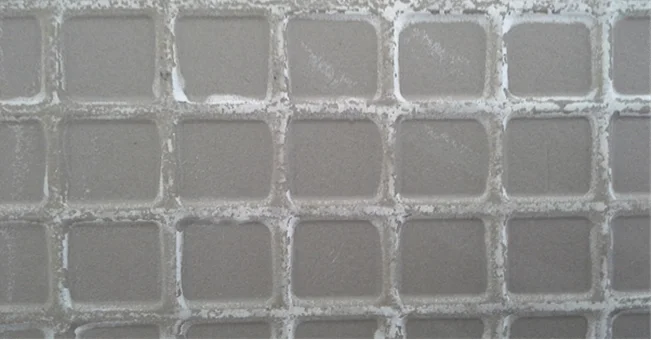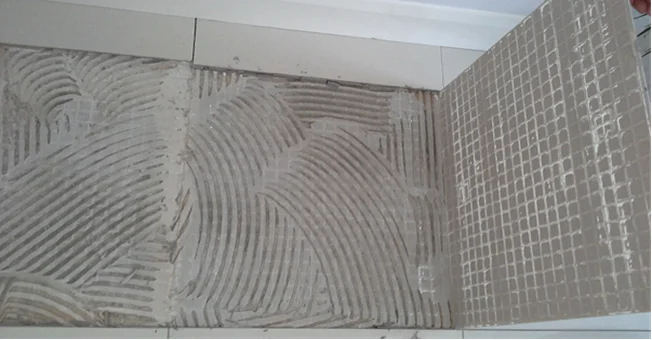When clients in Ireland and abroad ask us to investigate why glue fails, the investigations can take weeks, months or years. Not often can we wrap up a case in under a week however some time ago, this is exactly what happened. A solicitor representing a complainant contacted our laboratory.
We were told that six months previous, the complainant had purchased tiles and tile adhesive from a supplier, and the complainant had hired their own tiler (who was related to the complainant).
The complainant stated within two months of the completion of the job, she ‘gradually noticed that the tiled flooring in the downstairs area, ( which we understand is approximately 60 M²) was found to be lifting somewhat. This was determined under foot when a hollow sound could be heard upon walking on or tapping the floor’.
The complainant entered into some discussions with the tile contractor and it was determined that either the back of the tiles were coated with excess mould release agent or that the tile adhesive was defective.
Our Forensic Engineer visited the site and after the customary walkthrough of the downstairs areas, commenced the examination and photography.
Several areas which are commonly under foot, were examined and the tiling in these areas was found to be loose. The area under two sofa’s, was likewise examined and the tiles were in these areas were not loose.
In one area of the dining room area, two tiles, which exhibited a hollow sound, were lifted up easily by hand.
The back of these tiles was seen not to have any ceramic tile adhesive bonded to it.


